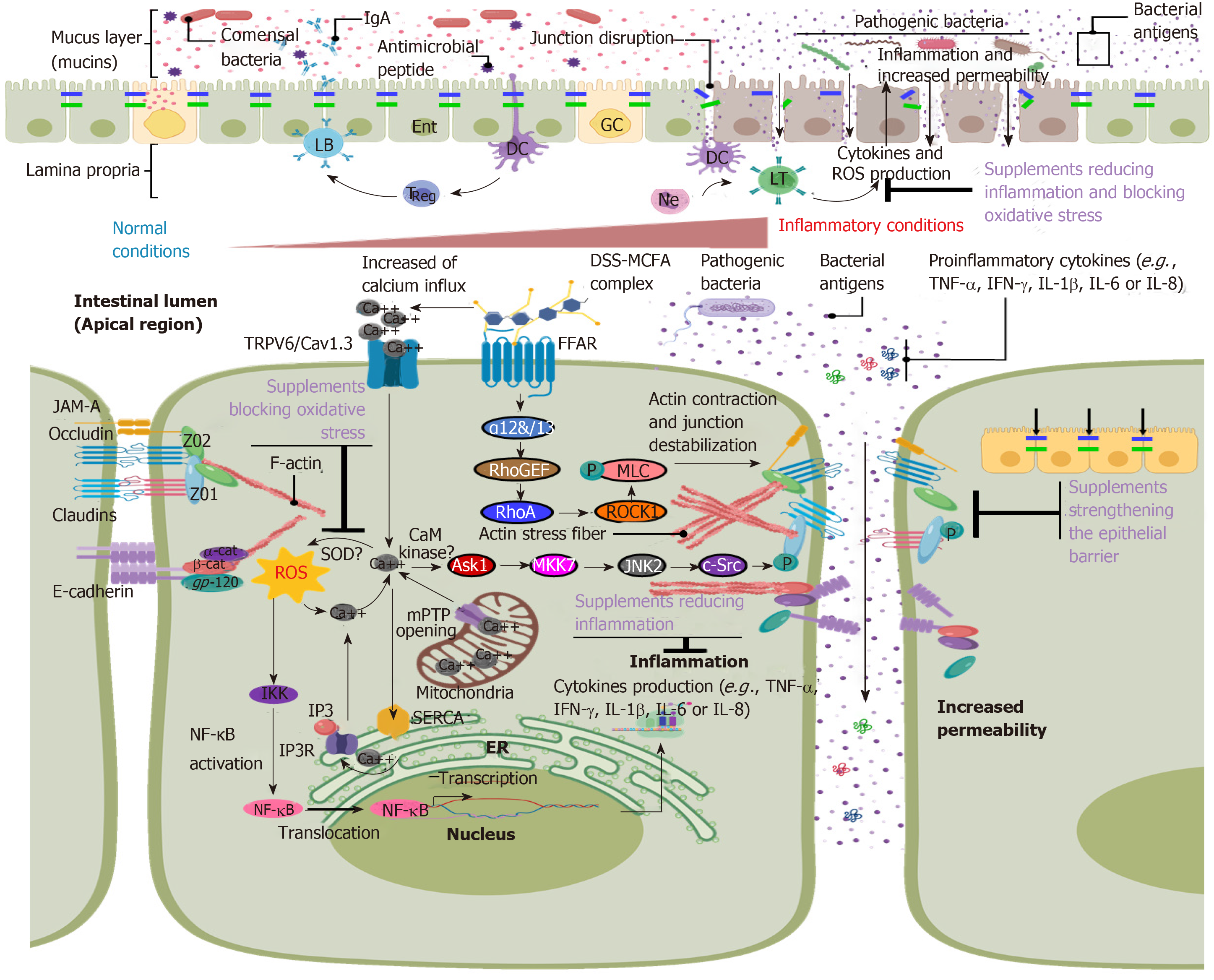Copyright
©The Author(s) 2019.
World J Gastroenterol. Aug 14, 2019; 25(30): 4181-4198
Published online Aug 14, 2019. doi: 10.3748/wjg.v25.i30.4181
Published online Aug 14, 2019. doi: 10.3748/wjg.v25.i30.4181
Figure 1 Mechanisms causing intestinal epithelial barrier dysfunction that can be counteracted by nutritional supplements.
The epithelial barrier is comprised of a mucus layer, an epithelial monolayer and the mucosa containing resident immune cells. It is a stable, tightly regulated barrier under basal conditions (top, left). Under inflammatory conditions, this barrier becomes compromised with a diminished mucus layer, disrupted epithelial monolayer and recruitment of many immune cells including neutrophils (top, right). The mechanisms causing loss of barrier integrity are summarized below. The apical junctional complex, built by tight and adherens junctions, controls epithelial permeability and maintains intestinal homeostasis. During inflammation, as seen in inflammatory bowel diseases or induced in rodents by dextran sulphate sodium or 2,4,6-trinitrobenzene sulfonic acid treatment, junctions are disrupted. The depicted inflammatory pathways ultimately lead to the disruption of tight and adherens junctions allowing for bacterial translocation that further triggers inflammation. For example, oxidative stress promotes activation and nuclear translocation of the transcription factor nuclear factor-ĸB and increased expression of proinflammatory cytokines. Dextran sulphate sodium treatment also promotes the activation of the RhoA pathway leading to actomyosin contraction, which contributes to junction destabilization, opening of the paracellular space and thus hyperpermeability. Nutritional supplements can alleviate colitis signs including inflammation, oxidative stress and junction disruption as indicated (compare Tables 1 and 2). DC: Dendritic cells; Ne: Neutrophils; LT: T-lymphocytes; LB: B-lymphocytes; DSS: Dextran sulphate sodium; NF-κB: Nuclear factor-ĸB; TNF-α: Tumor necrosis factor-α; JAM-A: Junctional adhesion molecule-A; ZO-1: Zonula occludens-1; ROS: Reactive oxygen species; IFN-γ: Interferon-γ; ER: Endoplasmic reticulum.
- Citation: Vargas-Robles H, Castro-Ochoa KF, Citalán-Madrid AF, Schnoor M. Beneficial effects of nutritional supplements on intestinal epithelial barrier functions in experimental colitis models in vivo. World J Gastroenterol 2019; 25(30): 4181-4198
- URL: https://www.wjgnet.com/1007-9327/full/v25/i30/4181.htm
- DOI: https://dx.doi.org/10.3748/wjg.v25.i30.4181









